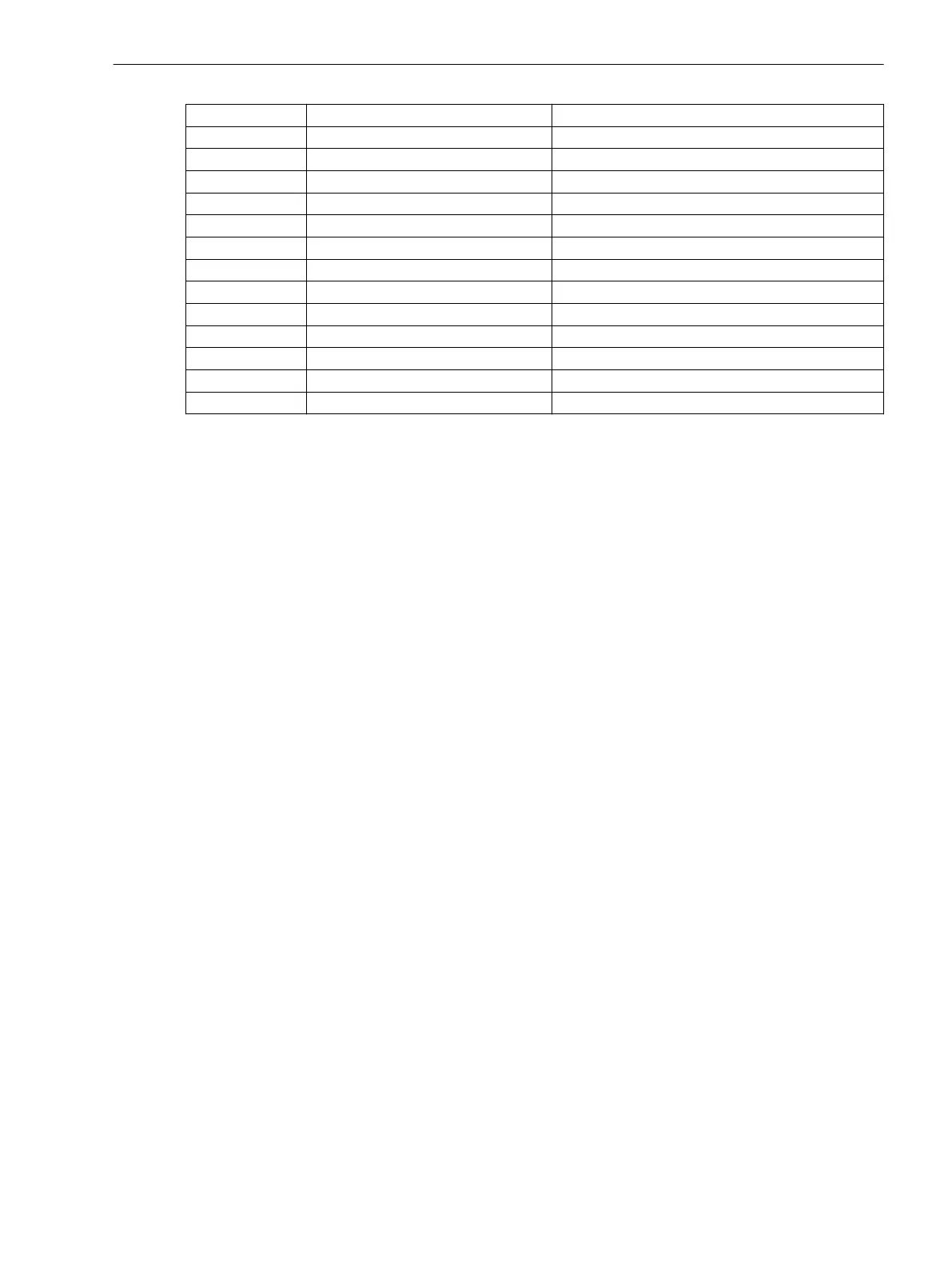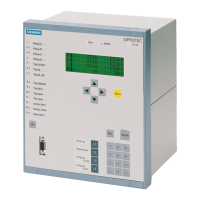FNo. Message Description
2698
67N-3 picked up
67N-3 element picked up
2646
67N-2 picked up
67N-2 element picked up
2681
67N-1 picked up
67N-1 element picked up
2684
67N-TOCPickedup
67N-TOC element picked up
2695
67N picked up
67N/67N-TOC element picked up
5159
46-2 picked up
46-2 picked up
5165
46-1 picked up
46-1 picked up
5166
46-TOC pickedup
46-TOC picked up
1215
64 Pickup
64 displacement voltage pick up
1221
50Ns-2 Pickup
50Ns-2 elementpicked up
1224
50Ns-1 Pickup
50Ns-1 elementpicked up
1227
51Ns Pickup
51Ns elementpicked up
6823
48 pickup
48 Startup supervision Pickup
Before they are entered in the fault log (event buffer) and transmitted to the system interface or CFC, the indi-
cations of Table 2-13 are buffered (starting with the incoming indication
Intermitt.EF
). The buffering does
not apply to signaling to relays and LEDs as it is required by time-graded protection systems for reverse inter-
locking. The buffer can store a maximum of two status changes (the most recent ones) for each indication.
Buffered messages are signaled to the fault log, CFC and to the system interface with the original time flag
only when a TRIP command is initiated by a protection function other than the intermittent ground fault
protection. This ascertains that a pickup, although delayed, is always signaled in association with each TRIP
command.
All pickup messages which usually do not occur during an intermittent ground fault are not affected by this
mechanism. Among others this includes the pickup and TRIP commands of the following protective functions:
•
Breaker failure protection,
•
Overload protection,
•
Frequency protection
•
Voltage protection
•
QU protection.
The pickup signals of these functions will still be logged immediately. A TRIP command of one of these protec-
tive functions will cause the buffered messages to be cleared since no connection exists between tripping
function and buffered message.
A fault event is cleared when the time T-reset has expired or the TRIP command
IEF Trip
has been termi-
nated.
Terminating a fault event for the intermittent ground fault protection thus is a special case. It is the time T-
reset that keeps the fault event opened and not the pickup.
Setting Notes
General
The protection function for intermittent ground faults can only take effect and is only accessible if the current
to be evaluated was configured in address 133, INTERM.EF (with Ignd or with with 3I0 or with
Ignd,sens.). If not required, this function is set to Disabled.
The function can be turned ON or OFF under address 3301 INTERM.EF.
The pickup threshold (r.m.s. value) is set in address 3302 Iie>. A rather sensitive setting is possible to
respond also to short ground faults since the pickup time shortens as the current in excess of the setting
increases. The setting range depends on the selection of the current to be evaluated at address 133
INTERM.EF.
2.13.2
Functions
2.13 Intermittent Ground Fault Protection
SIPROTEC 4, 7SJ80, Manual 201
E50417-G1140-C343-A8, Edition 12.2017

